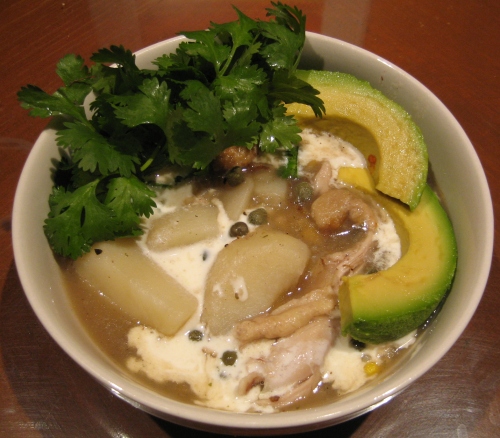This was a very straightforward dish, an eggy batter poured over cherries and baked until puffed and golden. It was very easy to put together, the whole batter is made in the blender, and the addition of almond and vanilla extracts as well as kirsh gave it some complexity of flavour. I’m always happy to see kirsh turn up on an ingredient list, because other than fondue au fromage, I’m not quite sure what to do with it.
The recipe recommends pitting the cherries, but gives the option to leave them whole. I left them au naturel and warned my guests. We didn’t have any incidents at dinner, however the next day I bit down on a cherry stone and may have loosened a tooth. The final dish was quite sweet, but I believe this was my fault. In rereading the recipe I notice that it called for sour cherries, and I’m fairly sure I used Bings from the grocery store. The sour cherries would have been welcome here, or if using sweet, cut the sugar.
This dish is located in the Fruit Desserts chapter of the book, but I think it would be more at home in with the Breakfast and Brunch section. It was billed as being “halfway between custard and cake”, turns out this is the state known as pancake. I was hoping it would be less sweet and more boozy, but as I mentioned that was probably my fault.
